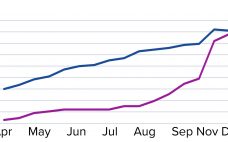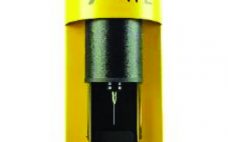This webcast features: Aleš Ĺ trancar, Managing Director, BIA Separations, a Sartorius Company In vitro transcription (IVT), the enzymatic process used for the production of mRNA vaccines, differentiates itself from biological fermentation processes by the need for linearized plasmid DNA. The linear isoform is produced with restriction enzymes from open-circular and supercoiled plasmid DNA. Employing a traditional pDNA manufacturing process, which removes linear and open-circular isoforms, will reduce production yield. However, when plasmid DNA and mRNA are treated as a single…
Sponsored Content
Lentiviral Vector Platform Generation: Increase Titer and Yield with Greater Predictability
This webcast features: Xin Xin, Group Leader, Small-Scale Upstream Process Development, and Senthil Kumar Kuppuswamy, Associate Principal Scientist, Downstream Process Development, WuXi Advanced Therapies The field of cell and gene therapies has expanded rapidly in the past several years. Lentiviral vectors have been in great demand as gene carriers in this field, especially for ex vivo gene therapies. However, large-scale lentiviral vector production still remains a significant challenge. WuXi Advanced Therapies has worked with Lentivirus since 2015 and it launched…
Improving and Intensifying Vaccine Purification By Implementing Affinity Chromatography
This webcast features: Zoltan Gulyas, Field Applications Specialist, Thermo Fisher Scientific Vaccines are well-established tools in the fight to eradicate infectious diseases. Over the past few decades, vaccine production has advanced significantly, largely by the introduction of new molecule modalities. However, these new types of vaccine candidates often require multiple chromatographic steps to obtain the desired level of purity. Developing an efficient purification process using the classical surface chemistries such as ion exchange and hydrophobic interaction requires significant amounts of…
Advanced Analytics to Accelerate Development of Genetic Vaccines
Biopharmaceutical companies are racing to develop vaccines that mitigate the COVID-19 pandemic, taking a wide range of vaccine-development approaches that include traditional modalities and cutting-edge technologies based on DNA and RNA. Vaccine developers are leveraging robust manufacturing concepts and integrated processes to shorten timelines. Advanced analytics also are playing a critical role in ensuring the safety and efficacy of those emerging vaccines. A New Wave of Vaccines Vaccines based on attenuated viruses entail development timelines ranging from four years to…
Reacting to a Pandemic: Innovations in Vaccine Development
Traditionally, viruses for vaccines have been grown in embryonated hen eggs. But new challenges introduced by the COVID-19 pandemic have encouraged and catalyzed innovations in the field of vaccine development. The biopharmaceutical industry has recognized an advantage in mammalian cell-culture systems as promising alternatives to egg-based vaccine production. Cell lines can be cultured to large quantities in bioreactors, allowing for much shorter lead times, a more controlled production process, and a higher grade of reproducibility through standardization. In this article,…
Bioreactor Automation Driven by Real-Time Sensing: Enhancing Productivity Through Accurate, Efficient Glucose Control
In the quest for improved quality and productivity in drug manufacturing, the industry is moving toward increasing use of bioreactor systems with real-time integrated monitoring and advanced analytics that can enable automation, drive performance, and improve data-rich quality control. However, there are multiple options for sensors and technologies that monitor important cell-culture variables or critical process parameters (CPPs). Furthermore, cell culture vessels can be disposable single-use bioreactors (SUB) or reusable glass or stainless-steel models. They can operate in stirred tanks,…
Silicone Tubing for Biopharmaceutical Applications: Particulates, Endotoxins, and Bioburden Characterization
Adoption of single-use systems (SUS) has increased steadily over the past few years driven by an increased focus on manufacturing biologics that require smaller scales than blockbuster drugs. Although SUS provide many benefits, some factors need to be considered when implementing them in biopharmaceutical production. With the regulatory landscape intensifying worldwide, drug manufacturers are expecting more data from suppliers to support the purity claims of supplied products, especially related to the purity of their product-contact surfaces. In this article, we…
A Universal Assay Determination Method for Antisense Oligonucleotides: A New Slope Spectroscopy Method
Antisense oligonucleotides (ASOs) are short, synthetic, single-stranded oligodeoxynucleotides that can alter RNA and reduce, restore, or modify protein expression through several distinct mechanisms. ASO technology has become an important drug discovery platform for most major pharmaceutical companies. To date, six antisense drugs have been approved by regulatory agencies to treat diseases spanning viral infections, hyperlipidemias, and neurological diseases. More than 50 additional ASO drugs are in clinical trials. For an ASO drug product, an assay of its active pharmaceutical ingredient…
Ask the Expert: Enabling Digital Chromatogram Review to Streamline Column Evaluations
Chromatogram review enables evaluation of packed-bed chromatography processes. Typically, that method entails paper-based, qualitative comparison of a profile obtained during a run with another from a reference batch. Such a protocol can be time consuming, resource intensive, and susceptible to operator error. Martin D. Jensen (senior engineer at Fujifilm Diosynth Biotechnologies, FDB) delivered an “Ask the Expert” presentation on 20 October 2020 to describe advantages that his company gained by transitioning from paper-based to digital chromatogram review. Jensen’s Presentation Chromatogram…
Ask the Expert: Revealing Cell Secrets Using Optical Sensors in Upstream Processing
Upstream operations can benefit significantly from real-time, in-line testing of cell-culture conditions. Yet as Jake Boy (senior application scientist at Scientific Bioprocessing Inc., SBI) observed in his 5 November 2020 “Ask the Expert” webcast, traditional electrochemical probe sensors do not perform well in T-flasks, shake flasks, Petri dishes, and microfluidics devices. Boy described how fluorescence-based optical sensors can glean valuable data from small culture devices, assisting with research into cellular growth. SBI’s Presentation Boy began by highlighting successful applications of…








